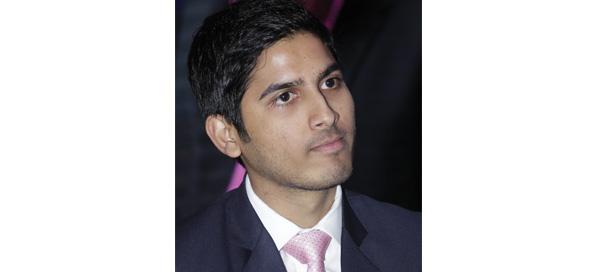In the Backbeat column, Pranal Modani, Business Head, C9 talks about trends in the fashion industry, the use of cutting-edge technologies and need for the industry to evolve further in today’s consumer-driven economy
BY PRANAL MODANI
Business Head, C9
My years in management education at the London Business School and the leadership roles I have held are very dear to me, yet very different from where I am now in the fashion industry. My journey towards the fashion industry began when the contemporary fashion scenario started evolving in multifarious ways. The changing trends transfixed me as I moved along. Branding and campaigning for labels came along in more than one way – from traditional to modern formats – and ever since, the market hasn’t looked back. From a time where Indian indigo was used to make jeans palatable, to today, where swadeshi khadi probably has a misplaced meaning in women’s fashion, the 21st century consumer has much to choose from. Trends from the 80s and 90s are making a comeback and how!
Fashion is a truly serious business. Maybe India was a late-comer to the fashion scene, but the pace today is exhilarating. In the history of the country, women’s fashion ranged from the beautiful sari and other wrapped garments to salwar kameez sets and was influenced mostly by local culture and climate. Then came the ‘western influence’ as most people termed it, with pants and tops, skirts, tank tops, and crop tops. The fashion clock is now moving towards seamless garments that are fabulous additions to the Indian woman’s wardrobe. Who thought that the elimination of bulky elastics, stitch lines, homogenous product quality, and being knit to shape would be a much sought-after characteristic of apparel!
Success to fashion leaders comes not from being time-tied and correct, but from bringing something new to the table - something extraordinary, something very novel that caters to the taste and needs of the modern consumer. These appealing answers to the consumer’s questions give strong direction to the industry. At C9, on the brink of bringing in a progressive range of apparel, we hope we are striking a balance between the cutting-edge technologies that we use and the way we wish to empower our consumers. Diversified market strategies lead to success, and many players have got that right. Despite difficulties like trials brought by economic trends, appealing to digitally-savvy shoppers, or catering to swiftly changing fashion trends, it is truly rewarding to be able to foray into the fashion industry today. Over the years, I have realized that getting out of your comfort zone is essential for growth. Willingness to take risks and not shying away from evolution make you show fortitude in the face of adversity. The fashion industry is full of competent and confident people, and this confidence will only grow from challenging yourself and saying ‘Yes’ to unexpected opportunities – even if they are hairraising. I mean, Steve Jobs didn’t read a book on how to be Steve Jobs. Sometimes, you have to take the plunge to be where you envision yourself.
As a consumer, nothing is as inspiring to me as embracing the newest technology; 3D printed dresses created waves when we heard of them, so did the Dutch Smoke Dress. Often, the fashion industry is merely talking about new product lines and the season’s stories. However, fashion plays a wider role in our lives, and these minimal discussions hunger for more in-depth attention, where how we dress can reflect our prevailing disposition.
In national discourse, fashion still needs to step up, and accord to itself the wider status that it deserves. Giving itself a voice, fashion and the industry must evolve to be full-fledged leaders in a consumer-driven economy. After all, it’s not for nothing that Coco Chanel said, “Fashion is not something that exists in dresses only. Fashion is in the sky, in the street, fashion has to do with ideas, the way we live, what is happening.”
@ FEEDBACK
pmodani@sangamgroup.com























